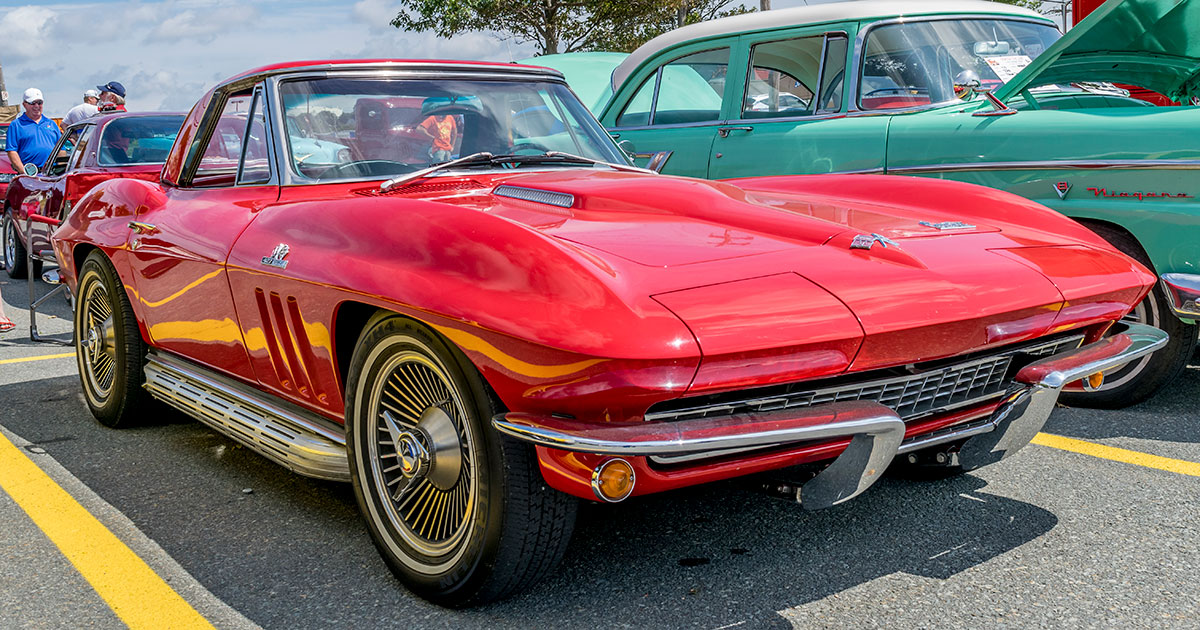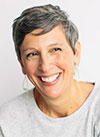
I’ve been thinking a lot about aging lately.
Maybe it’s because I’ve been front and center caring for my 94-year-old mother for the past five years and, in recent months, under hospice care.
Maybe it’s because I’m seeing the seemingly smooth faces of my Gen-X Hollywood peers like Demi Moore and Rob Lowe, yet upon closer examination, there’s a tension beneath the surface (both physically visible and emotionally felt) – the silent struggle to stave off time.
Maybe it’s because it’s a challenge for me to look in the mirror each day and not recognize the face staring back at me.
Facing the Mirror
Aging is hard. Especially for women. And some men.
 Julie Bonasso,Temple 1995, is a consultant and coach specializing in lawyer well-being. An experienced corporate lawyer and Master Certified Coach, she helps clients integrate self with career to accelerate growth. The cornerstone of her coaching is leveraging well-being as the pathway to success. She is the founder and CEO of Julie Bonasso Coaching, and a member of the State Bar of Wisconsin Task Force on Lawyer Well-Being. juliebonasso.com
Julie Bonasso,Temple 1995, is a consultant and coach specializing in lawyer well-being. An experienced corporate lawyer and Master Certified Coach, she helps clients integrate self with career to accelerate growth. The cornerstone of her coaching is leveraging well-being as the pathway to success. She is the founder and CEO of Julie Bonasso Coaching, and a member of the State Bar of Wisconsin Task Force on Lawyer Well-Being. juliebonasso.com
While it’s true we are discussing this more openly as a society, culturally, aging (for women in particular) is still not acceptable. A case in point is the movie The Substance. The movie is a “body horror” film and explores the disturbing consequences of a revolutionary product that allows women to create younger, “better” versions of themselves – only to reveal the psychological and physical costs of severing from their aging identities.[1]
This film created a cognitive dissonance for me. In real life, Moore, who played the leading role, was living out what the movie portrayed. When I saw her accept the Golden Globe Award, I was, on the one hand, inspired by her speech. And yet, on the other hand, I had a visceral reaction as I watched someone, almost in slow motion, whose face wasn’t moving, having just made a movie about the gruesome slippery slope of anti-aging efforts. At that podium, I saw echoes of Ghost-era Demi – still reaching for the 1980s version of herself and still clearly a woman older than 50.
I am not judging people for taking steps to feel their very best. Rather, my intention is to share my observations, which reflect my internal conflict of trying to prevent the tsunami from arriving when the water is already at the shoreline.
As I’ve grown older, I can feel my previously healthy self-esteem about my physical appearance starting to splinter.
I’m more critical of my features; I don’t like taking photos anymore and when I look in the mirror, I see someone I don’t recognize. And it’s not just the mirror. It’s the hesitancy to be photographed, the slight shame when someone tags you unexpectedly, the inner wince at your reflection on Zoom.
Can you relate?
These feelings aren’t just mine. They’re showing up across generations. Research from BMC Psychology links photo-editing habits to lower self-esteem and increased self-objectification, particularly among adolescents.[2] It’s no wonder so many young women are turning to Botox and fillers – procedures once reserved for midlife are now increasingly popular among women under 30. Case in point: approximately 40% of “cosmetic procedures in the U.S. in 2019 were carried out on those between the ages of 38 and 40.”[3] A survey by the International Society of Aesthetic Plastic Surgery also found that “non-surgical cosmetic procedures performed by plastic surgeons had increased by 57.8% from 2018 to 2022.”[4]
The danger with trying to halt the inevitable aging process is real. As the normalization of plastic surgery and cosmetic enhancement continues to rise – especially through the lens of social media – so does the psychological fallout. Experts warn that the constant exposure to filtered, surgically altered faces has made it increasingly difficult to distinguish between natural aging and curated perfection. This tectonic societal shift for the relentless pursuit of youth can fuel appearance-based anxiety, body dysmorphia, and an increase in depression.[5]
What might have once been a personal choice – something a woman did for herself – has, over time, started to feel like an expectation, like something we’re supposed to do. And when the pressure to look younger becomes the norm, aging stops being a private experience and turns into something we perform. The more we try to keep up, the more we risk losing our footing – our clarity, our confidence, our sense of self.
Is this really what we want to model for younger generations?
Unlearning the Lie
Maybe that’s why I’ve found myself craving counterexamples: moments of clarity, resistance, and women and men choosing a different way forward.
Earlier in the year, I was thinking about a photo shoot that Jamie Lee Curtis did 23 years ago. She showed up in More magazine without makeup or touch-ups – in boy shorts and a sports bra. She was 43 years old and wanted to show women what was behind the “idealized” version of celebrities.[6]
What was interesting to me about this recent memory is that back then, this article and these photos made such a deep imprint on my psyche even though I wasn’t consciously thinking about aging at 34 years old. The fact that I still remembered it two decades later blows my mind about the power of Jamie Lee’s naked honesty and vulnerability.
Today, the pressure is even more pronounced with the invasive and pervasive social media onslaught. However, I am seeing moments of protest and healing.
Mel Robbins showing up on Instagram in bed and without makeup.
Andie McDowell brave enough to walk the red carpet, with, wait for it … gray hair!
Linda Evangelista openly discussing the harm and disfigurement that occurred when she had a cosmetic procedure.[7] The impact of this procedure “not only destroyed [her] livelihood, it [sic] sent [her] into a cycle of deep depression, profound sadness, and the lowest depths of self-loathing.”[8]
And every day, people, including yours truly, are stepping out without the mask and talking about it more openly.
I’ve been lucky to have two parents who modeled aging as a strength. After raising 12 children and sending all of us on to higher education, my father returned to school and graduated from college at age 70.
At 89, my mother moved across the country after living her entire life in the small town where she was born. Even at this late stage of life and in a few short years, she built community, nurtured friendships and became family to those around her. People fell in love with her spirit of generosity, wit, and charm.
Need more examples?
Samuel L. Jackson landed his first movie role at age 46 and is still going strong in his mid-70s.[9]
Nicknamed “The Flying Nun,” Sister Marion Irvine began running at 48 and, at 54, became the oldest person to participate in the U.S. Olympic Trials for track and field.[10]
Ray Kroc joined McDonald’s at 52 and transformed it into the behemoth it is today.[11]
At age 65, Laura Ingalls Wilder published her first “Little House” book, launching a beloved and enduring series of books and a TV show.[12]
In her late 70s, Grandma Moses (Anna Mary Robertson Moses) began painting and became one of America’s most celebrated folk artists.[13]
At 97, Iris Apfel signed a modeling contract with IMG.[14]
If they can do it, so can we.
Coming Home to Ourselves
The real work isn’t just in admiring others; it’s in how we choose to show up in our own lives, how we quiet the inner critic, and what we model for those watching us.
One way I’m doing this is to pivot my mental chatter by changing the messaging, practicing mindfulness, and living laser-focused on my life’s mission.
What if aging isn’t viewed as a decline but as the moment we finally take space in the life we built and really wield our purpose?
What brilliance are you still shielding because you’ve been taught it has an expiration date?
What would it look like to stop hiding and start leading with the power only age can provide?
For me, the answer has been right in front of me, in the woman I have been caring for these past five years.
One of the things I’ve been noticing about my mom, who is now in her final days, is that although she is tired and weak and can no longer ambulate, she still cares about her appearance, yet without an attachment to what once was. She maintains her daily beauty routine, but more importantly, she has retained her joy, positivity, and peace, from which her beauty radiates.
Her face and body carry the imprint of 94 years of life, love, and loss, and yet she doesn’t turn away when she looks in the mirror.
Endnotes
[1] Borja Garcia, The Ageless Haunt: Margaret Qualley and the Idealized Young Self in The Substance (II), Medium (Oct. 19, 2024), https://medium.com/@fenixartstudio/the-ageless-haunt-margaret-qualley-and-the-idealized-younger-self-in-the-substance-ii-22140a97111e; Joshua Robbins, ‘The Substance’ Explores Feminism Through Body Horror, Queer City Nerve (Oct. 11, 2024), https://qcnerve.com/the-substance-review/.
[2] Phillip Ozimek et al., How Photo Editing in Social Media Shapes Self-perceived Attractiveness and Self-esteem via Self-objectification and Physical Appearance Comparisons, BMC Psych. (April 6, 2023),https://bmcpsychology.biomedcentral.com/articles/10.1186/s40359-023-01143-0.
[3] Adam England, Cosmetic Procedures Are Dominating Social Media, What Does This Mean for Mental Health? Verywell Mind (updated Feb. 8, 2023), https://www.verywellmind.com/normalization-plastic-surgery-social-media-mental-health-7093826; Aesthetic Soc’y, Aesthetic Plastic Surgery National Databank Statistics 2020-2021,https://cdn.theaestheticsociety.org/media/statistics/2021-TheAestheticSocietyStatistics.pdf.
[4] Guardian, ‘You Start to Wonder, Is It Really a Choice?’ How It Feels to Age with Cosmetic Injectables, March 23, 2024, https://www.theguardian.com/fashion/2024/mar/24/you-start-to-wonder-is-it-really-a-choice-how-it-feels-to-age-with-cosmetic-injectables.
[5] England, supra note 3.
[6] Michelle Lee & Eric Andersson, Jamie Lee Curtis Recalls Going Makeup-Free and Posing in Her Underwear in a Magazine 22 Years Ago, People (Jan. 5, 2025), https://people.com/jamie-lee-curtis-recalls-going-makeup-free-posing-underwear-2002-magazine-cover-exclusive-8768962.
[7] Lauren Valenti, Linda Evangelista Reveals She Was “Brutally Disfigured” After a Cosmetic Procedure, Vogue (Sept. 23, 2021), https://www.vogue.com/article/linda-evangelista-cosmetic-procedure.
[8] Id.
[9] Steve Kroft, Samuel L. Jackson: A Long, Vigorous Career Still in Full Stride, CBS News (June 9, 2019), https://www.cbsnews.com/news/samuel-l-jackson-a-long-vigorous-career-still-in-full-stride-60-minutes-2019-06-09/.
[10] Kate Shefte, Olympia, Sport Look Back on Trailblazing 1984 Women’s Olympic Marathon Trials, Seattle Times, May 31, 2024, https://www.seattletimes.com/sports/olympics/olympia-sport-look-back-on-trailblazing-1984-womens-olympic-marathon-trials/.
[11] Who Is Ray Kroc? How McDonald’s Was Started and Became an Empire, Bus. Insider, https://www.businessinsider.com/mcdonalds-founder-ray-kroc-chain-timeline#1954-while-working-as-a-salesman-kroc-came-across-the-small-restaurant-and-saw-great-promise-3.
[12] Jennifer Robinson, AMERICAN MASTERS: Laura Ingalls Wilder: Prairie to Page, KPBS, Dec. 21, 2020, https://www.kpbs.org/news/arts-culture/2020/12/21/american-masters-laura-ingalls-wilder-prairie-page.
[13] Nat’l Museum of Women in the Arts, Grandma Moses (Anna Mary Robertson Moses), https://nmwa.org/art/artists/grandma-moses-anna-mary-robertson-moses/ (last visited April 9, 2025).
[14] Chloe Foussianes, Iris Apfel, 97-year-old Style Icon, Has Just Signed with a Modeling Agency, Town & Country (Jan. 31, 2019), https://www.townandcountrymag.com/style/fashion-trends/a26103265/iris-apfel-img-model-agency-contract/.
» Cite this article: 98 Wis. Law. 33-35 (May 2025).
